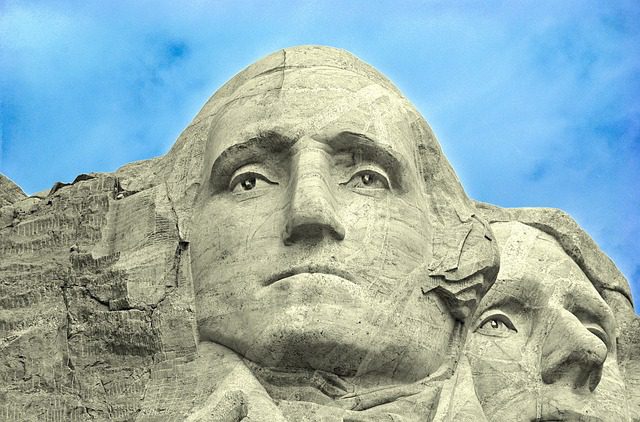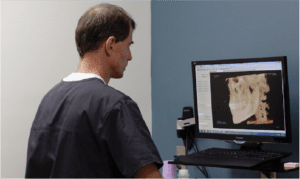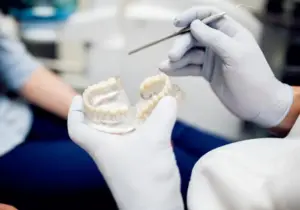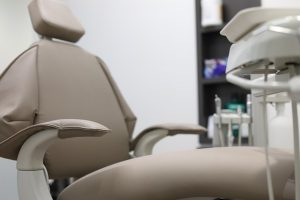Of all the important things George Washington is known for, like being the first President and his starring role during the founding of US democracy, we often focus on his teeth…or lack thereof.
We have this weird obsession with understanding what George Washington’s dentures were made of and what they would have looked like. Is it a curiosity of something there were no photos to record? Maybe. Is it random? Maybe. Is it of any consequence to the course of the Revolutionary War? Surprisingly, also maybe.
Regardless, indulging in a little historical oral health trivia is always fun.
George Washington’s Terrible Teeth
Something everyone can agree on is that our founding father was much more adept at war and politics than brushing and flossing. In fact, at this time of the 18th century, Americans were largely still “brushing” their teeth with pieces of burnt bread. Between that, poor nutrition in childhood, and illness, The People’s oral health was not good.
So it tracks, then, that Washington started needing teeth pulled early on in life, at age 24. He often recorded in his diary his oral health issues like painful, decaying and falling-out teeth. By the time he was president, he had only one, and then zero, natural teeth remaining. After pulling his last tooth, Washington’s dentist kept it in a locket… which seems not normal.
His lifetime struggle with dental health caused Washington to become his own sort of case study on the development of dentistry in young America. He had several different sets of dentures over his lifetime, and a few different dentists. And while the dentures he wore might look awful and painful to us now, you might be surprised to learn that many of them were ahead of their time in terms of dental technology.
Ivory Teeth in the 18th Century
Carving fake teeth of ivory was a common way to replace teeth in the 1700’s. This technology developed because, as strange as it may sound, teeth were a big part of politics and patriotic symbolism. Civilized peoples have good teeth. The ideal republic has good teeth. Trusted and powerful leaders have good teeth. These cultural values give insight to why Washington was so obsessed with hiding the fact that his mouth was a mess, even at the expense of his comfort.
Ivory was a commodity back in the day, before laws protecting elephants and hippopotami were introduced. Ivory isn’t the best at naturally mimicking teeth, and would often break, chip and become discolored. But it worked, and so it was the norm in rich colonial tooth replacement. The other thing that ivory teeth signaled is wealth and power, so it was an instance where if you have to have fake teeth, at least have expensive fake teeth.
Many of Washington’s dentures were gold leaf or brass fittings inlaid with at least some ivory teeth, often mixed in with teeth from other animals as well as people. In fact, historians think the wooden-teeth myth of George Washington’s dentures came from the dark and discolored appearance of dentures that were actually made of ivory.
The Idea of “Donor” Teeth
When we’re doing our dental done grafts in our office and we say we’re using “donor teeth” to create a holistic dentin graft, we’re talking about teeth that needed to be extracted, and were given voluntarily. When we’re talking about Washington’s dentures made of “donor teeth,” though, we don’t mean the same thing.
Often, Washington’s dentures were often a mix of animal teeth, like pigs and cows, as well as teeth from his slaves. He’d also keep his own teeth once they’d fallen out so he could incorporate them into his dentures. Occasionally he did pay the slaves for their teeth, but it was nearly nothing and they weren’t allowed to say no, so it’s still terrible. While George was not the only rich white guy from the South to have slave teeth in his mouth at the time, and about 5000 years too late to be the first person to do it, a set of dentures made of unethically-sourced “donor” teeth was, unfortunately, the most natural-looking way to replace teeth in the 1700’s.
Teeth Tricks During the War
To Washington, the public getting wind of his constant teeth troubles was possibly the worst thing that could happen to his career, so he held onto all things tooth-related tighter than today’s president holds the codes to all the nukes. Unfortunately, in 1781, the British intercepted a letter Washington wrote to his dentist asking for dental cleaning tools. Part of the letter made the British think that Washington wasn’t going to be in Philadelphia anytime soon. However, Washington and his generals took this as an opportunity to move their plan South, and this little hiccup resulted in the total defeat of the British Army at the Battle of Yorktown.
Dated Dentistry: Problematic, Poorly-Fitting Dentures
Throughout his life, Washington was constantly in discomfort from his tooth decay as well as his dentures. He often wrote to his dentist complaining about how his dentures made his face look strange or how they fit so poorly they were painful. The discomfort and instability of his dentures may have played a large part in why George was a man of such few words; his appearance was integral to the public’s view of him, and the more he spoke publicly, the higher the chance of his dentures malfunctioning and causing an irreparable situation.
And even with the best dentists available, Washington was still dissatisfied with his appearance. He specifically complained about the set he had in when his famous portrait, now on the $1 bill, was painted, saying they made his lips bulge out unnaturally… they did – you can totally see what he was talking about.
None of this is to say Washington’s dentists weren’t at the top of their game. The dentures made for him for his inauguration used a proprietary series of screws, “donor” teeth, a bridge carved of rare hippopotami ivory, and gold wire. It even had a spot for that one, sad tooth Washington had left at the time. Although, the ivory bridge was also made of lead. So that’s not great, but it is the pinnacle example of the experimental nature of Washington’s relationship with tooth replacement.










